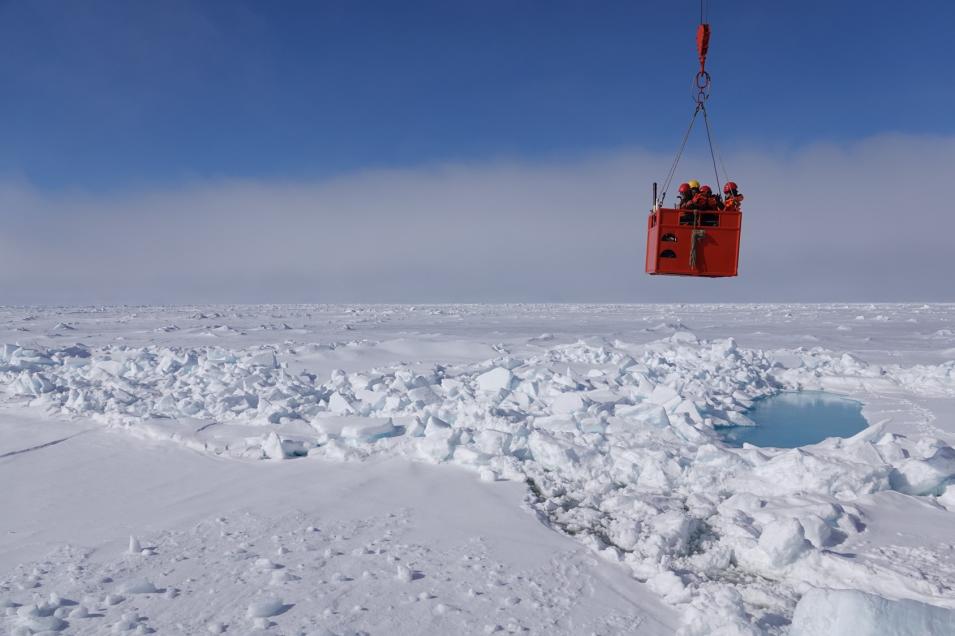Dr. Melinda Webster, Research Assistant Professor at the Geophysical Institute of the University of Alaska Fairbanks
Research Interests: Improving our understanding of how the atmosphere, snow cover, and sea ice interact with one another over seasonal and decadal time scales, and how changes associated with a warming climate are affecting those interactions and snow conditions. Finding new ways to combine satellite data to expand our capability to monitor snow and melt pond conditions in the Arctic.
Research Highlights: Conducting scientific research in the Arctic is full of challenges. It’s dangerous, expensive to get to and spend time in, and home to such extreme cold that, in the words of Dr. Melinda Webster of the University of Alaska Fairbanks, it’s “excellent at breaking instruments.” These conditions aren’t just inconvenient or uncomfortable, they make it difficult to obtain observations in the region, which Webster needs for her research on Arctic sea ice. Fortunately, Webster has an array of NASA Earth data to help her overcome these challenges.
Sea ice is an integral part of the Arctic Ocean and, during the dark winter months, the body of water is almost entirely covered by ice. In summer, some of this ice melts due to warmer temperatures and increased sunlight. By mid-September, sea ice in the Arctic typically reaches its minimum thickness and extent. Then, as the days pass and the season’s change from fall to winter, the temperatures fall, the days get shorter, and the ice begins expanding again.
Sea ice is light-colored and has a high albedo (i.e., a high degree of reflectiveness), so it reflects more sunlight (solar energy) back into space than ocean water. This reflectivity plays an important role in maintaining the Earth’s energy balance, because the sunlight reflected back into space does not warm the surface. It helps keep the Arctic cold. In addition, sea ice also keeps Arctic air cool by forming a barrier between the (relatively) warmer ocean water and the cold atmosphere above it.
However, as the climate warms and the amount of sea ice decreases, the surface of the Arctic is becoming less reflective, and its cooling effect is being reduced. This, in turn, may initiate what’s known as a “positive feedback loop,” wherein ocean warming, caused by increased absorption of solar energy, leads to the greater loss of sea ice and, consequently further warming. This is why the portion of the Arctic covered by sea ice is considered to be an important indicator of global climate change, and why scientists with organizations like the National Snow and Ice Data Center (NSIDC) have been monitoring sea ice extent (i.e., the amount of area covered by sea ice) for decades.
Beyond sea ice extent, the age of sea ice is also an important indicator of Arctic conditions. Older ice, which has accumulated over many years, is generally thicker and stronger than younger ice. Therefore, the loss of older ice in a particular area would suggest that the sea ice replacing it would be younger and thinner. Scientists have also found evidence to suggest that the melt season for Arctic sea ice is getting longer, meaning that the ice is melting earlier in the year and freezing later than it once did.
As a result, scientists want to better understand how interactions among the various components of the Arctic’s climate system — ocean water, weather patterns and storms, snow, sea ice, melt ponds, and so on — affect and are affected by these changing sea-ice conditions.


